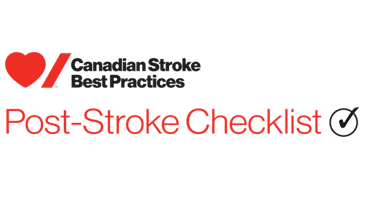- 1. General Management Considerations Prior to, during, and after Pregnancy in a Woman with Stroke
-
2. Specific Management Considerations for Secondary Stroke Prevention during Pregnancy
- 2A. Antithrombotic Use in Pregnancy (Antiplatelets and Anticoagulants) Following Ischemic Stroke or Transient Ischemic Attack (TIA)
- 2B) Blood Pressure Management for Stroke Prevention in Pregnancy (ischemic and hemorrhagic)
- 2C) Statins for Ischemic Stroke Prevention in Pregnancy
- 2D) Pre-existing Diabetes and Gestational Diabetes for Stroke Prevention in Pregnancy
- 3. Management Considerations for Specific Ischemic Stroke Etiologies in Pregnancy
2. Specific Management Considerations for Secondary Stroke Prevention during Pregnancy
November 2017 - 2017 UPDATE
2A. Antithrombotic Use in Pregnancy (Antiplatelets and Anticoagulants) Following Ischemic Stroke or Transient Ischemic Attack (TIA)
- Decision-making regarding antithrombotic use can be complex and a multidisciplinary review may be needed to assess maternal and fetal risk/benefit of the options.
- Antithrombotic management decisions can be tailored on an individual basis and may be informed by many issues, such as:
- stroke etiology and accompanying stroke recurrence risk outside of pregnancy (e.g. prosthetic heart valve vs. cryptogenic stroke);
- the size and recency of the stroke (e.g. bleeding risk is higher with larger and more recent infarcts);
- the stage of pregnancy (e.g. peripartum and post-partum stroke risk is higher than first and second trimester).
- If considering anticoagulation, in addition to factors listed above, consider a woman’s medical and obstetrical history. For example, a woman with a history of preterm labour or rapid delivery can be at higher risk of an early or rapid delivery, making a planned cessation of LMWH more challenging.
- Antithrombotic management decisions can be tailored on an individual basis and may be informed by many issues, such as:
- In some women with a prior ischemic stroke whose underlying mechanism of stroke has resolved and residual risk is presumed to be comparable to the general population and who are not already on antithrombotics, it is reasonable to consider not starting antithrombotic prophylaxis during pregnancy.
- If antiplatelet agents (clopidogrel, acetylsalicylic acid, combined acetylsalicylic acid and extended-release dipyridamole, or ticagrelor) are indicated or already in use for stroke prevention, changing to low-dose acetylsalicylic acid (ASA) (81 mg daily) is preferred prior to pregnancy or once a pregnancy is confirmed.
- There is insufficient evidence to support the safety of antiplatelet agents other than acetylsalicylic acid in pregnancy. However, there may be cases where other antiplatelets agents are clinically indicated and these situations should be addressed on a case-by-case basis (e.g., Clopidogrel in the setting of coronary stents).
- In women for whom antiplatelet agents would be recommended for stroke prevention, low dose acetylsalicylic acid is reasonable pre-conception, first trimester and throughout the rest of pregnancy
Note: Non-Steroidal Anti-Inflamatory Drugs (NSAIDs) have been linked to premature closure of the ductus arteriosis when used in the third trimester and may impair fetal renal function. Low dose ASA, while an NSAID, has not been reported to increase the risk of premature closure of the ductus arteriosis in clinical trials, and increases in fetal renal impairment have not been reported. Other guidelines 22 ackowledge case control studies that associated increased risk of fetal gastroschisis with ASA taken before the eleventh week of pregnancy. Results from more recent RCTs including EAGeR 29 and ASPRE, 31 using low-dose ASA pre-conception (81 mg) or after 11 weeks (150 mg) to reduce the risks of pregnancy loss or the development of preeclampsia, have not been associated with increased risk of major adverse events when used throughout pregnancy. - Low-dose ASA can be considered during breastfeeding since there is evidence that acetylsalicylic acid is not excreted into breast milk and salicylate levels are low in women taking daily low-dose apririn. Higher does of daily acetylsalicylic acid may have additional risks, with possible risks of metabolic acidosis and theoretical risks of Reye’s syndrome in infants exposed to high doses of salicylic acid. 39-41
- Warfarin is potentially teratogenic and should be avoided, especially between 6 to 12 weeks gestational age. When anticoagulation is considered, low molecular weight heparin (LMWH) is preferred throughout pregnancy.
- In certain rare situations with very strong indications for warfarin (e.g. women with a mechanical cardiac valve), collaboration with thrombosis experts may be required. In these situations, switching to an alternative to warfarin may be considered as soon as pregnancy is discovered, and could consider restarting warfarin after the twelfth week of pregnancy until closer to delivery. Multidisciplinary management of these situations is preferred. 7
- There are insufficient data on the safety of direct oral anticoagulants (DOAC) (apixaban, dabigatran, edoxaban, rivaroxaban) in pregnancy. Switching to LMWH is encouraged as soon as a pregnancy is identified or if pregnancy is planned.
- In certain circumstances, therapeutic doses of LMWH can be considered a reasonable alternative to ASA or prophylactic doses could be considered with or without low-dose ASA. For example:
- A woman considered at high stroke/thrombotic risk (e.g. with multiple strokes),
- A woman with known hypercoagulability (e.g. anti-phospholipid antibody syndrome).
- Low-dose LMWH should be stopped at least 12 hours prior to administration of regional anesthesia, and full-dose LMWH should be stopped at least 24 hours in advance of regional anesthesia or planned induction. 7
- Intravenous unfractionated heparin could be considered in a hospitalized woman in place of LMWH, using standardized local protocols, especially if there is concern about need for urgent delivery or invasive procedures.
- When using IV unfractionated heparin, a low dose, acute coronary syndrome nomogram, without bolus, is preferred in stroke patients, and would also be preferred in pregnancy.
- LMWH or unfractionated heparin can be restarted at least 4 to 6 hours after the removal of the neuraxial catheter if bleeding is well controlled and there are no neuraxial concerns, and continued for 6-12 weeks post-delivery.
- After 6 to 12 weeks post-delivery, consider the choice of antithrombotic that was recommended outside of pregnancy, taking into account issues regarding breastfeeding (see section C above for links), and future pregnancy planning.
- If anticoagulation is required, low molecular weight heparin and warfarin are both considered safe options during breastfeeding. The safety of direct oral anticoagulants in breastfeeding have not been established.
2B) Blood Pressure Management for Stroke Prevention in Pregnancy (ischemic and hemorrhagic)
- The non-pharmacological and pharmacological management of hypertension in pregnancy is reviewed in detail elsewhere: 6, 18
- Angiotensin-converting enzyme (ACE) inhibitors and angiotensin II receptor blockers (ARB’s) – two common classes of medications used in stroke prevention – carry an increased risk of fetal complications (kidney injury) and low amniotic fluid, especially if used after the first trimester. These medications should be discontinued prior to pregnancy or as soon as a pregnancy is recognized.
- If they have been inadvertently taken, prompt referral to a regional centre for detailed fetal structural ultrasound and counselling is encouraged.
- Commonly used first-line oral medications for blood pressure control in pregnancy are labetalol, methyldopa and long acting nifedipine. 6 Selection of specific antihypertensives should consider side-effect profiles for the woman, fetus or newborn baby
- Angiotensin-converting enzyme (ACE) inhibitors and angiotensin II receptor blockers (ARB’s) – two common classes of medications used in stroke prevention – carry an increased risk of fetal complications (kidney injury) and low amniotic fluid, especially if used after the first trimester. These medications should be discontinued prior to pregnancy or as soon as a pregnancy is recognized.
- All women who develop hypertension during pregnancy require prompt investigations and review by an expert in the management of hypertension in pregnancy. After 20 weeks gestational age, the differential diagnosis should always include preeclampsia, which must be identified for appropriate obstetric and fetal management.
- In pregnancy, women with a previous stroke should have a blood pressure target of consistently lower than 140 mmHg systolic and consistently lower than 90 mmHg diastolic. Refer to CSBPR Secondary Prevention of stroke module for Management of Hypertension after stroke and SOGC guidelines for Management of Hypertension in Pregnancy 2014 6
- Monitoring is warranted to ensure targets are achieved, to detect early rises in blood pressure or urinary protein suggestive of preeclampsia, and to avoid severe hypoperfusion.
- Gestational hypertension and preeclampsia are dynamic pregnancy-related disorders that often require inpatient management, maternal and fetal monitoring, repeat laboratory investigations, frequent medication adjustment, and may affect the timing of delivery.
- Preeclampsia is a risk factor for long term cardiovascular disease. For all women with preeclampsia or gestational hypertension, long-term follow-up for blood pressure management is reasonable as the risk of hypertension, coronary, cerebrovascular or peripheral artery disease is increased. 44 In the situation specifically considered here (pregnant women with a prior history of stroke), long-term blood pressure control should be optimized to standard secondary prevention of stroke targets. Refer to CSBPR Secondary Prevention of Stroke module for Management of Hypertension following Stroke.
2C) Statins for Ischemic Stroke Prevention in Pregnancy
- Interpretation of lipid levels is unreliable in pregnancy due to the normal physiologic changes of pregnancy and should not be used to guide decisions about therapy. In addition, serum lipid levels should not be routinely measured during pregnancy. First-line management of dyslipidemia includes counseling for healthy diet and exercise.
- There is insufficient evidence regarding the safety of statins in pregnancy and lactation. It is reasonable to temporarily interrupt statin therapy preconception and throughout pregnancy.
- The timing for restarting, or newly prescribing, statins for secondary stroke prevention after delivery should be individualized based on specific clinical circumstances (e.g., presence of high-risk conditions such as recent MI, compatibility with breastfeeding plans).
2D) Pre-existing Diabetes and Gestational Diabetes for Stroke Prevention in Pregnancy
- Women with diabetes in pregnancy (pre-existing type 1 or type 2 diabetes or gestational diabetes) require frequent, close follow-up by an interdisciplinary team (where available) to monitor for maternal and fetal complications. Glycemic monitoring, monitoring for other vascular risk factors, and glucose management throughout pregnancy and postpartum should follow established guidelines (Diabetes Canada 2013; www.diabetes.ca). 16
- For women with a history of stroke, glucose tolerance tests can be considered earlier in pregnancy (e.g. at 20 weeks instead of 24-28 weeks) if considered at high-risk of gestational diabetes.6, 16
- It is reasonable to counsel women with a history of stroke and who have gestational diabetes to ensure long-term follow-up through primary care, with the goal to facilitate lifestyle interventions to reduce the future risk of developing diabetes and stroke. For women who experience gestational diabetes, the 10 year risk of diabetes and cardiovascular disease is elevated. 56
The recommendations from this module have been published in International Journal of Stroke by SAGE Publications Ltd. Copyright © 2017 World Stroke Organization.
Stroke is a leading cause of adult neurological disability, death, and maternal morbidity and mortality in developed nations. Based on the pooled data in a recent meta-analysis (Swartz et al 2017) stroke affects 30/100,000 pregnancies. This is three times higher than rates for young adults overall (10/100,000 per year) and outcomes are dependent on rapid recognition and management. Stroke types are also more varied in pregnancy, with relatively more venous sinus thrombosis and intracranial hemorrhage. In addition, causes more commonly found in young adults (e.g. dissection, congenital cardiac complications), physiological adaptations to pregnancy (e.g., hypervolemia, increased clotting factors), and pregnancy specific disorders (e.g., HELLP, preeclampsia) combine to increase risk of stroke in pregnancy. Stroke is sufficiently common that most specialists providing either obstetrical or stroke care encounter women with a past stroke wanting to become pregnant, or women who develop a stroke during or immediately after a pregnancy. Thus, there is a need for a rational approach to management decisions, based on the best available literature, guided by expert consensus.
- Systems in place to enable women who become pregnant or are planning pregnancy to access appropriate antenatal care.
- Collaborative relationships established between obstetrical, maternal-fetal medicine experts and stroke specialists to optimize access and management for women who experience stroke before, during or immediately after pregnancy.
- Development of data collection systems to monitor women who experience stroke prior to, during or immediately after a pregnancy to improve knowledge of safety and efficacy of management approaches, drive quality improvement and systems change.
- Promote randomized controlled trials or large population-based observational studies where feasible to reduce knowledge gaps and increase the ability to move from a consensus statement to an evidence-based clinical practice guideline
- Proportion of women with a past history of stroke who experience a recurrent stroke during pregnancy or early postpartum.
- Proportion of women with a past history of stroke who experience a change in neurological abilities (physical, cognitive or functional) during pregnancy or early postpartum (positive or negative).
- Pregnancy-related maternal mortality in women with a past history of stroke.
- Proportions and rates of adverse fetal and neonatal outcomes: congenital anomalies, preterm delivery, perinatal and intrapartum morbidity and mortality.
For Professionals
- Acute stroke treatments and vascular risk reduction in non-pregnant women
- Secondary prevention of stroke
- Stroke rehabilitation
- www.professional.heart.org
- www.nice.org.uk
- The Society of Obstetricians and Gynecologists of Canada (SOGC)
- SOGC Hypertensive disorders of pregnancy
- Diabetes Canada. Clinical Practice Guidelines
- The American Congress of Obstetricians and Gynecologists
- Diabetes in pregnancy
- General teratogenicity of medications in pregnancy
- Reprotox
- General teratogenicity of medications in breast feeding
- Prescribing medicine in pregnancy
For Patients
Evidence Table Vascular Risk Reduction
Secondary Prevention of Stroke in Pregnancy
Vascular Risk Reduction
This section is focused on issues of stroke prevention associated with women who have either had a stroke in the past and are now planning to become pregnant, or who have sustained a stroke during pregnancy, but who are beyond the hyperacute phase. Pregnancy is associated with an increased risk of stroke due to changes in hemodynamics and coagulation. The evidence associated with management for commonly used secondary prevention strategies, including antithrombotic medications (both antiplatelets and anticoagulants), blood pressure management, cholesterol management and diabetes care, is summarized.
Antithrombotics
While aspirin therapy has been shown to reduce the risk of future vascular events among high-risk individuals, its use for stroke prevention during pregnancy hasn’t been specifically studied. Low-dose aspirin in pregnancy has been better studied for pregnancy-related conditions, such as recurrent pregnancy loss, clotting disorders or preeclampsia. The potential benefit of low-dose aspirin was examined in high-risk women with a history of one to two previous pregnancy losses (EAGeR trial, Schisterman et al. 2014). The results of this trial indicated that among women attempting to become pregnant, there was no difference between groups (81 mg aspirin daily vs. placebo) in the number of pregnancy losses (13% vs. 12%, RR=1.06, 95% CI 0.77-1.46, p=0.78). In a meta-analysis including the results from 3 trials, low-dose aspirin was not associated with a reduction in the risk of preeclampsia, severe preeclampsia or pre-term birth (Roberge et al. 2016). More recently, the results from the ASPRE Trial (Rolnik et al. 2017) suggested that low-dose aspirin (150 mg per day), initiated from 11 to 14 weeks of gestation until 36 weeks of gestation, was associated with a reduced risk of delivery with preeclampsia before 37 weeks of gestation, compared with placebo (OR=0.38, 95% CI 0.20-0.74, p=0.04), without an increased risk of adverse events.
The safety of low-dose aspirin use in pregnancy is well-established. Nørgard et al. (2005) reported on the outcomes of 3,415 children with 4 congenital abnormalities, which were included in a national Congenital Abnormality Registry. Compared with a reference group that was composed of 19,428 children with other congenital abnormalities, exposure to aspirin was found not to significantly increase the odds of any of the 4 congenital abnormalities (including neural-tube defects, exomphalos/gastroschisis, cleft lip ± palate and posterior cleft palate). A meta-analysis including the results from 22 controlled studies yielded similar results (Kozer et al. 2002). Pooling the results from 8 and 6 studies, the overall odds of congenital malformations or cardiac malformations were not significantly higher in the aspirin-exposed group (OR=1.33, 95% CI 0.94-1.89, p=0.11 and OR=1.01, 95% CI 0.91-1.12, p=0.80, respectively). However, the incidence of gastroschisis was significantly higher in the aspirin-exposed group (OR=2.37, 95% CI 1.44-3.88, p=0.0006). There is a theoretical risk of Reye’s syndrome associated with aspirin use during pregnancy, but no confirmed reports.
Certain conditions, including the presence of artificial heart valves, or conditions related to hypercoagulability require the continued need for thromboprophylaxis, or their initiation during pregnancy. The safest known anticoagulants associated with pregnancy are low molecular weight heparin (LHWH) and unfractionated heparin (UFH), neither of which crosses the placenta. Vitamin K antagonists (VKA) are classified by the FDA as a category X substance, therefore their risks and benefits must be closely weighed, as their use has been associated with an increased risk of miscarriage, teratogenic effects in the first trimester, and risk of bleeding to both fetus and mother. In a systematic review including 28 studies examining the use of oral anticoagulants among pregnant women with mechanical heart valves, Chan et al. (2000), reported that while their use was more effective for thromboembolic prophylaxis, the frequency of congenital abnormalities was 6.4%. In a more recent review, Xu et al. (2016) included the results of 51 studies (2,113 pregnancies) of women who received anticoagulation therapy related to management of mechanical heart valves. The frequency of congenital fetal anomalies associated with VKA use was 2.13% and 0.68% for lose-dose VKA. There were no fetal abnormalities in the LMWH or UFH regimen groups. Maternal thromboembolic events (MTEs) and maternal deaths were lowest in the low-dose VKA subgroup (1.14% and 0.31%, respectively). The occurrences of MTEs and major antenatal hemorrhage events were highest in the UFH group (29.9% and 5.3%, respectively). Compared with low-dose VKA regimen, the incidences of spontaneous abortion and warfarin embryopathy were significantly higher compared with the high-dose VKA group.
Anticoagulants have also been examined for the prevention of pregnancy complications associated with thrombophilias, but were not found to be effective. Results from the Thrombophilia in Pregnancy Prophylaxis Study (TIPPS) indicated that among pregnant women with thrombophilia at high risk of pregnancy complications, antepartum prophylactic dalteparin did not reduce the risk of venous thromboembolism and placenta-mediated pregnancy complications (Rodger et al. 2014). In this trial, 292 pregnant women were randomized to receive 5,000 IU dalteparin once daily from randomization to 20 weeks’ gestation and then the same dose twice daily until 37 weeks of gestation vs. no dalteparin. The primary outcome, a composite including any of proximal deep vein thrombosis, pulmonary embolism, or sudden maternal death, severe or early onset preeclampsia, oliguria, pulmonary edema, coagulopathy, birth of small-for-gestational-age SGA infant, or pregnancy loss, was not significantly reduced in the dalteparin group (risk difference of -1.8%, 95% CI -10.6%-7.1%, p=0.70). There was also no significant difference among three treatment groups (LMWH, ASA or both combined) in the percentage of live births in the Low Molecular Weight Heparin and/or Aspirin in Prevention of Habitual Abortion (HABENOX) Trial (Visser et al. 2011).
Hypertension
Women with hypertensive-disorders of pregnancy are at greater risk for stroke, especially those with traditional risk factors (Leffert et al. 2015), therefore, treatment of moderate to severe hypertension is critical to achieving a favourable outcome. A limited number of agents, including methyldopa, labetalol, and nifedipine, are known to be safe and effective during pregnancy. The potential benefit of a tight versus less tight regimen among women with moderate diastolic hypertension (90-105 mm Hg) was evaluated in the Control of Hypertension In Pregnancy Study (CHIPS) study (Magee et al. 2015). Although the frequency of severe hypertension was significantly higher among women in the less-tight control group, there was no significant difference between groups in the frequency of any of individual components of the primary outcome (miscarriage, ectopic pregnancy, elective termination, perinatal death, still birth or high-level neonatal care). The frequency of serious maternal complications was not significantly lower among women in the tight-control group (2.0% vs. 3.7%, adj OR=1.74, 95% CI 0.79-3.84). There was a single stroke/TIA in the tight-control group vs. none in the less-tight control group. A Cochrane review (Abalos et al. 2013) including 48 RCTs (4,723 women) evaluated antihypertensive drug treatment for mild to moderate hypertension during pregnancy, defined as SBP 140-169 mmHg and DBP 90-109 mmHg. Treatment contrasts compared 1 antihypertensive drug vs. either placebo or no antihypertensive drug (n=29), and one antihypertensive drug vs. another (n=22), with a duration of treatment of at least 7 days. Compared with women who received no treatment, the risk of severe hypertension was significantly reduced in the active treatment group. While the risk of pre-eclampsia/proteinuria was not significantly reduced in the active treatment group (RR= 0.93, 95% CI 0.80-1.08, p=0.34), in the sub group examination of beta blockers, the risk of developing proteinuria/pre-eclampsia was significantly reduced (RR=0.73, 95% CI 0.57-0.94). The risk of fetal or neonatal death, pre-term birth or small-for-gestational age were not significantly reduced for women taking antihypertensive treatment. In terms of treatment for the prevention of hypertension during pregnancy, a Cochrane review including 13 RCTs in women without hypertension examined the effectiveness of calcium supplementation to reduce the risk of hypertensive disorders of pregnancy (Hofmeyr et al. 2014). Women were randomized to receive either high-dose (1 g/day) or low-dose (<1 g/da) calcium supplement or placebo, until delivery. High-dose calcium supplementation was associated with significantly reduced risks of high blood pressure (RR= 0.65, 95% CI 0.53-0.81, p<0.0001) and pre-eclampsia (RR= 0.45, 95% CI 0.31-0.65, p<0.0001). Low-dose supplementation was also associated with a significantly reduced risk of high blood pressure (RR= 0.53, 95% CI 0.38-0.74, p<0.0001).
Statin Use
While the benefits of statin use for secondary prevention are well-established, statin treatment is usually not warranted during pregnancy, as lipid dysregulation is a physiologic adaptation of pregnancy. The development of certain cells (e.g myelin) and the accumulation of fat mass in the fetus, are dependent upon lipid metabolism. Statin medications have been classified in pregnancy as Category X, and are contraindicated due to their potential teratogenicity. Several reports comparing the pregnancy outcomes of women accidentally exposed to statins during pregnancy with those of women not exposed, have been published. The results are ambiguous, with some studies suggesting a significant increased risk of congenital abnormalities associated with statin use, particularly during the first trimester. In the largest cohort study (Bateman et al. 2015), statin use was associated with a significantly increased risk in the incidence of birth defects in unadjusted analysis (6.34% vs. 3.55%, RR=1.79, 95% CI 1.43-2.23), but was no longer evident in an analysis using propensity scores, adjusting for age, diabetes and other confounding factors (RR=1.07, 95% CI 0.85-1.37). Zarek & Koren (2014) included the results from 6 controlled studies in a meta-analysis, and reported that the use of statins during pregnancy was not associated with an increased risk of birth defects (RR=1.15, 95% CI 0.75-1.76, p=0.52), although there was a significant increase in risk of miscarriage (RR=1.35, 95% CI 1.04-1.75). In a case-control study, Winterfeld et al. (2013) reported the frequency of major birth defects was non-significantly higher in the statin-exposed group (4.1% vs. 2.7%, OR=1.5, 95% CI 0.5-4.5, p=0.43), while the frequency of pre-term delivery, miscarriage or fetal death was significantly higher in the statin-exposed group. Most recently, Karalis et al. (2016) reviewed the results of 16 case series, cohort studies, meta-analyses and an RCT, and concluded there was no clear evidence of a relationship linking congenital anomalies with statin use in pregnancy, suggesting they were probably not teratogenic, while at the same time, cautioning that their use should be avoided.
Diabetes
Women with gestational diabetes are at increased risk of antenatal stroke (Scott et all 2012, James et al. 2005), and may be at risk for future stroke up to 7 years after delivery (Goueslard et al. 2016). In studies that have examined the relationship between gestational diabetes and future risk of cardiovascular disease, including stroke, the strength of the relationship is attenuated after adjusting for age and subsequent diabetes or menopausal status (Archambault et al. 2014, Savitz et al. 2014, Shah et al. 2008). A low glycemic index diet has been shown to significantly reduce both fasting and 2-hour post-prandial blood glucose, compared with a control group consuming intermediate-high glycemic index foods (Ma et al. 2014). Target 1-hour postprandial blood glucose of <7.8 mmol/L has been associated with good outcomes and has been suggested as a reasonable target for women with gestational diabetes (Thompson et al. 2013).
Management Considerations for Specific Stroke Etiologies in Pregnancy
There is limited evidence concerning the management of strokes that occur during pregnancy, with specific etiologies including cardioembolic source, cerebral venous sinus thrombosis (CVST), cervical artery dissection, antiphospholipid antibody syndrome (AAS) and cryptogenic stroke. The evidence base is largely composed of case reports and case series. Regardless of the etiology, treatment with either oral anticoagulants or antiplatelets (aspirin) appears to be common practice.
Outside of pregnancy, cervical artery dissections are usually treated with either a vitamin K antagonist or antiplatelet (aspirin) for 3-6 months. Case reports of women treated for carotid and vertebral dissections occurring in both the antenatal and early post-partum period, indicate the same management strategies may be used (Shanmugalingam et al. 2016, Baffour et al. 2012, Waidelich et al. 2008) without adverse effects on the mother or baby. The use of anticoagulants or antiplatelet drugs among a series of 62 women who presented with CVST during pregnancy was reported by Ciron et al. (2013). The preventative strategies used during subsequent pregnancies included no treatment (n=3), anticoagulation therapy during entire pregnancy, with and without aspirin; anticoagulation therapy during 3rd trimester of pregnancy, with and without aspirin; and anticoagulation therapy during entire pregnancy and puerperium. Demir et al. (2013) reporting on 19 cases of pregnancy-associated CVST, noted that all women were treated with LWMH (enoxaparin) at a dose of 95 IU/kg twice daily for the duration of their pregnancy. Both aspirin and warfarin were used for secondary prevention in a study including 68 women who sustained CVST during pregnancy (Lamy et al. 2000).





